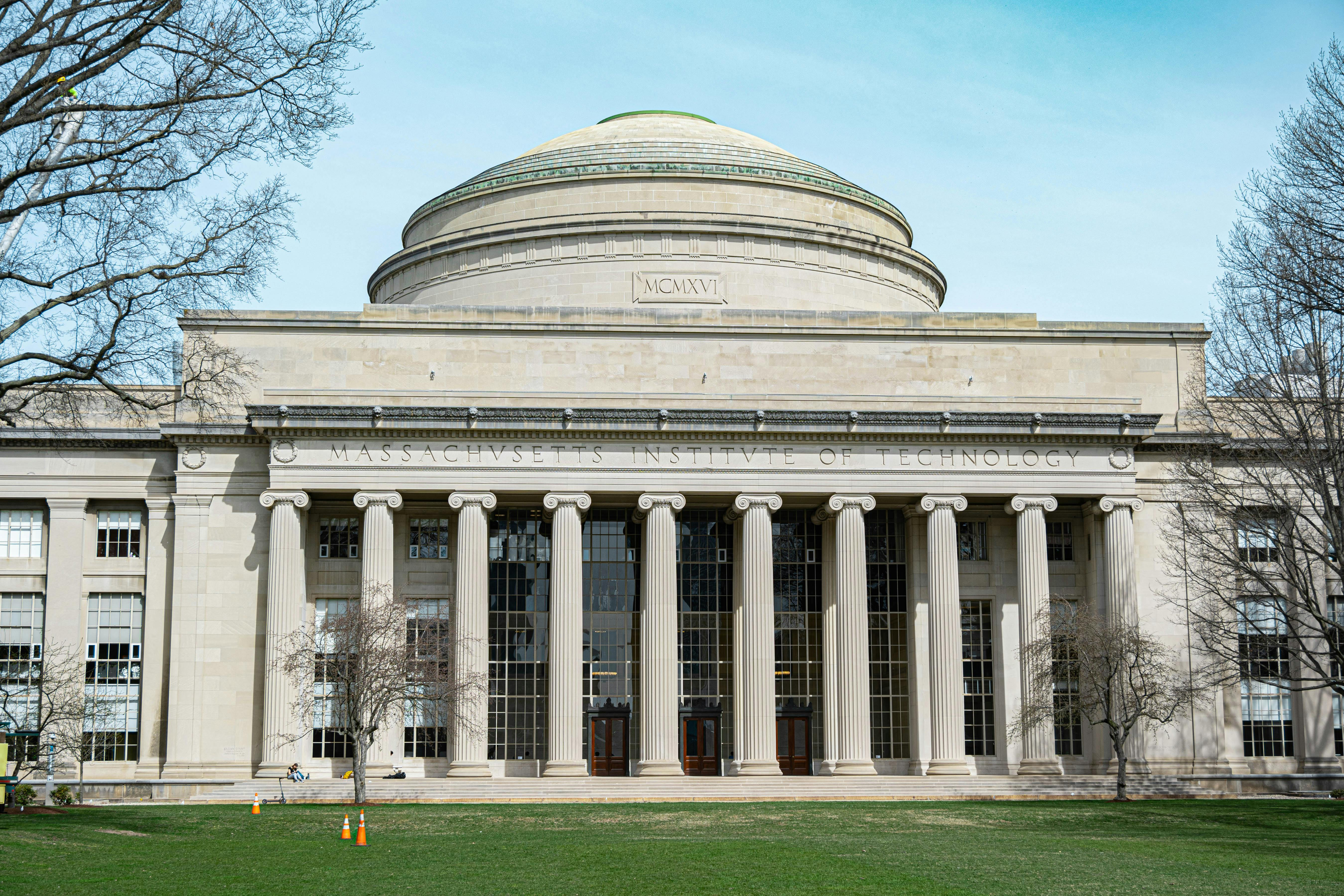Finding colleges with the best financial aid is crucial for students trying to manage the high costs of higher education. As tuition fees increase each year, many families struggle to ease the heavy financial burden. This blog covers key ideas and metrics for measuring affordability, best need-based financial aid colleges, and schools with great financial aid for middle-class families. By the end, you’ll have a clear guide and tips to help make your education more affordable.
Finding colleges with best financial aid: Takeaways
- Finding schools with great financial aid is crucial for managing rising education costs. Understanding the types of aid and net price is necessary before starting.
- Focus on 3 key metrics when evaluating affordability: average annual aid amount, percentage of students receiving aid, and average annual net price.
- The 4 best need-based financial aid colleges: Berea College, Albion College, Georgetown College, and Coe College, are introduced in detail to familiarize readers.
- The top 20 Colleges with best financial aid for middle-class families are listed, led by MIT, Stanford University, and Harvard University.
- Utilize the Net Price Calculator and the FAFSA to get personalized cost estimates and unlock access to good financial aid.
Best Financial Aid Colleges: What to Consider?
Before searching for colleges that give the most financial aid, it’s important to understand key concepts to ensure you’re making a smart decision.
Types of Aid
Financial aid comes in four primary forms, each with its own specific terms and conditions. Below is a quick overview:
| Types of Financial Aid | Explanation | Whether Payback Is Required |
|---|---|---|
| Grants | Need-based awards provided by the government or colleges. | No |
| Scholarships | Merit-based awards from colleges or private organizations. | No |
| Work-study | Earnings students gain from part-time jobs while studying are capped and not guaranteed. | No |
| Loan | Borrowed money that must be repaid with interest after graduation. | Yes |
Most financial aid packages at schools include grants and scholarships that don’t need to be repaid. Some schools also offer loans, which students must pay back with interest after graduation, and the terms can differ. Lastly, some colleges provide work-study programs, allowing students to earn money and gain experience through on-campus part-time jobs.
Net Price
The net price is the actual cost you should pay after all financial aid has been applied. It’s a critical metric for identifying colleges that provide the most financial aid. It’s necessary not to simply focus on tuition fees or financial aid amounts during cost comparison. Because a college with generous financial aid may not have the lowest net price if its original costs are very high.
To find this crucial number, you can take advantage of each college’s Net Price Calculator, which is available on every U.S. college’s website. This is the best way to identify colleges that offer the most financial aid for your specific situation.
However, your net price mostly doesn’t include your room & board expenses, or other personal expenses like books, supplies, or transportation. Therefore, managing housing expenditure, which is the largest part of personal expenses, becomes vital. uhomes.com offers inexpensive, high-quality student accommodations in the U.S.A., which are near campus and help you save more on rent.
Best Need Based Financial Aid Colleges: Top 4
Finding best need-based financial aid colleges might be complicated. With so many numbers and policies, how can you identify the best one? It is advisable to consider three key indicators: average annual aid amount, percentage of students receiving aid, and average annual net price.
The average annual aid amount is the mean value of financial aid awarded to each student receiving aid per year. A school may have a very high average aid amount, but it is only to a small number of students that it gives best financial aid packages. That’s why you should never look at this metric in isolation and had better combine it with the percentage of students receiving aid. This metric measures the breadth or accessibility of the aid. A high percentage indicates that financial aid is widespread, not just reserved for a few cohorts. We highlighted the importance of net price in the previous passage; this number is the most important metric for families.
Notably, “meet 100% of demonstrated need” can mean different things, so it is pivotal to look carefully at each school’s policies. It seems difficult for all students to find colleges with full financial aid; instead, colleges offer “no-loan” packages to replace student loans with grants, scholarships, and work-study options, which can cover the full cost of attendance. The following passage introduces 4 private liberal arts colleges that meet 100% of financial need. Let’s start with a chart:
| School | Average Annual Aid Amount | Average Annual Net Price | Percentage of Students Receiving Aid | Overall Grade |
|---|---|---|---|---|
| Berea College | 51923 | 4379 | 100% | B+ |
| Albion College | 50344 | 18470 | 100% | C+ |
| Georgetown College | 41435 | 14878 | 100% | B- |
| Coe College | 43772 | 20940 | 100% | B |
Berea College
Berea College is one of the most famous schools with the best financial aid. Located in Berea, Kentucky, it stands out for its best financial aid programs, based on a tuition-free promise and a loan-free policy. This enables students to complete their degrees with very little debt.
- Financial Freedom Pledge: Every student admitted receives a full aid package covering all tuition costs. Based on FAFSA results, the college also covers as much as possible toward housing, meals, and fees. Berea has not charged tuition since 1892.
- No-Loan Policy: As one of only around 25 U.S. colleges that exclude loans from their aid packages, Berea ensures students are not burdened with repayable debt. This approach has helped it rank among the top schools for graduating students with the least debt.
- Student Contribution: Students are responsible for an amount up to their Student Aid Index (SAI), as determined by the FAFSA. To help meet this obligation, the college supports students in securing summer employment.
- Beyond Tuition: Berea offers additional resources like an average of $4,000 for internships and a $400 clothing stipend for juniors and seniors.
Georgetown College
Georgetown College is a respected Christian liberal arts college. It is also situated in Kentucky and commits full financial aid to ensure equitable access to educational opportunities.
- 100% Need-Based Aid: The college is dedicated to offering complete financial assistance through federal, state, private, and institutional support.
- Aid Structure: Support packages generally include grants, scholarships, work-study options, and loans. It’s worth noting that Georgetown awards aid based solely on financial need and does not offer merit-based scholarships, except for certain athletic awards.
- Application Requirements: To be considered for aid, applicants should submit both the FAFSA and the CSS Profile by February 1. The college requires financial details from both custodial and non-custodial parents, though waivers may be available in some cases.

Albion College
Albion College is in Albion, Michigan, and was founded in 1835. It is dedicated to blending merit-based and need-based financial aid to deliver personalized support for most students.
- Tailored Aid Combinations: The college works closely with families to assemble aid packages that can include academic scholarships, grants, low-interest loans, and on-campus job opportunities.
- Albion Institutional Commitment: A key element of their strategy is ensuring a minimum level of grant aid based on each student’s financial need. This commitment may be adjusted if a student receives external scholarships, but the college states that the net cost of attendance will not increase.
- Application Steps: Students are encouraged to submit the FAFSA by March 1. Families experiencing unusual financial situations can also request a reassessment of their aid package.
Coe College
Coe College is situated in Cedar Rapids, Iowa. It maintains a “three-way partnership” among the institution, students, and parents, reinforced by a great aid program that reaches all enrolled students.
- High Aid Amount and Coverage Rate: The college provides substantial financial support, with the average aid package making education highly affordable. Thanks to this generous policy, every incoming student can benefit from Coe’s financial aid.
- Aid Variety: Support packages combine renewable merit scholarships, need-based grants, federal loans, and student employment.
- Application Info: Students must submit the FAFSA by March 1 each year to qualify for federal, state, and institutional grants. The college also tracks Satisfactory Academic Progress (SAP) for those receiving aid.
Schools with Great Financial Aid: For Middle-Class Families

Many middle-class families are eager to seek schools with great financial aid, because sending the next generation to college is a major financial investment. Beyond school rankings and academic strengths, middle-class families need to weigh practical factors like tuition fees, scholarship opportunities, and return on investment as well.
Fortunately, many U.S. universities offer best financial aid packages tailored to middle-class families, which can significantly lower the actual cost of attendance. The 2026 Niche ranking enumerates several colleges with best financial aid for middle-class students and families. At these colleges, at least 20% of the student body has an annual family income between $30,000 and $79,000.
This ranking is based on nine key factors: academics grade (including acceptance rate and quality of professors) at 40%, value grade (covering average loan amount and alumni earnings) at 27.5%, professors grade at 7.5%, campus grade at 5%, student life grade at 5%, and student surveys on overall experience at 5%, etc. Clearly, it emphasizes what middle-class parents care about most: their children’s academic success and the return on their educational investment. Here are the top 20 schools from the list:
| Ranking | School | Average Annual Aid Amount | Average Annual Net Price | Percentage of Students Receiving Aid |
|---|---|---|---|---|
| 1 | MIT | 58331 | 21519 | 72% |
| 2 | Stanford University | 64164 | 17998 | 68% |
| 3 | Harvard University | 64942 | 17900 | 72% |
| 4 | Dartmouth College | 66480 | 17322 | 59% |
| 5 | Columbia University | 65173 | 20869 | 56% |
| 6 | Vanderbilt University | 57723 | 26689 | 70% |
| 7 | Princeton University | 60629 | 19811 | 61% |
| 8 | California Institute of Technology | 60201 | 23397 | 68% |
| 9 | Rice University | 53526 | 20587 | 66% |
| 10 | Brown University | 58378 | 26608 | 61% |
| 11 | Washington University in St. Louis | 61036 | 22440 | 54% |
| 12 | Duke University | 59327 | 23422 | 56% |
| 13 | Georgetown University | 46729 | 37967 | 48% |
| 14 | University of Chicago | 58877 | 27979 | 53% |
| 15 | University of Michigan – Ann Arbor | 22005 | 19005 | 66% |
| 16 | UCLA | 15166 | 22441 | 60% |
| 17 | Cornell University | 56741 | 26455 | 60% |
| 18 | Northwestern University | 64463 | 23341 | 61% |
| 19 | Claremont McKenna College | 52149 | 29978 | 61% |
| 20 | Johns Hopkins University | 58456 | 22844 | 67% |
It’s worth noting that some top private institutions, led by MIT and Ivy League schools, rank highly on this list. Although the tuition fees at these schools are relatively high, they continue to win the favor of middle-class families because of their excellent education quality, abundant resources, and generous financial aid. Additionally, graduates tend to earn higher starting salaries, resulting in a better return on investment. For example, starting in fall 2025, MIT will cover not only full tuition but also housing, meals, fees, books, and personal expenses for students from families earning under $100,000 a year. Household incomes under $200,000 will have their full tuition covered. This initiative not only helps lower-income students but also significantly benefits middle-class families.
Plus, the list includes well-known public universities with more affordable tuition and excellent rankings, such as UCLA and the University of Michigan–Ann Arbor. These schools similarly offer high-quality education and strong career prospects for graduates, and are often at a lower cost than private institutions, which show outstanding value and attract numerous middle-class families.
Please be aware that some universities set clear income thresholds for aid eligibility. For instance, Rice University offers grants that cover full tuition, fees, and living expenses for students from households earning under $75000, and grants only cover full tuition for those with incomes between $75,000 and $140,000. This shows how aid policies can vary across different income ranges.
These schools demonstrate their support for middle-class families in various ways, whether through educational quality, affordability, or post-graduation prospects. Additionally, many colleges in the list are located in Cambridge, such as MIT and Harvard. Consider finding comfortable student accommodation in Cambridge with uhomes.com. We offer the highest cashback and include bills, resulting in a low price.
Choose Best Financial Aid Colleges: Suggestion
Selecting best financial aid colleges requires a strategic approach to ensure you find colleges suitable for your specific situation. By centering on key areas, you can make an informed decision. Below are practical suggestions with concrete steps.

Self-Assessment & College Search Tool
You should begin with a clear assessment of your financial situation. Understand your Expected Family Contribution (EFC), now called the Student Aid Index (SAI), which serves as the foundation for need-based aid calculations. Once you understand your finances, use online tools to identify colleges that offer the best need-based financial aid. To be specific, the FAFSA4caster gives an estimate of your federal aid eligibility, while the College Scorecard provides valuable data on graduation rates and student debt. These resources provide personalized estimates and help you find colleges with the best financial aid packages, enabling you to create a realistic list of potential schools from the start.
Net Price Comparison
As discussed earlier, always compare net costs instead of sticker prices. A college with a high tuition but generous aid can be more affordable than a cheaper school with minimal assistance. Don’t forget to use each college’s official Net Price Calculator on their financial aid website. By inputting your financial details, you receive a personalized estimate that reveals the true cost, helping you identify colleges that give the most financial aid.
Apply for the FAFSA
The Free Application for Federal Student Aid (FAFSA) is your gateway to federal, state, and institutional aid. Submit it as early as possible, as many schools award funds on a first-come, first-served basis. Meeting priority deadlines dramatically increases your chances of receiving grants and work-study from colleges that offer the most financial aid. Remember, you must submit the FAFSA every year to continue receiving aid.
Schools With Good Financial Aid: Conclusion
Colleges with best financial aid are not difficult to find. First, you had better look for institutions that balance or perform well on all three metrics above, thus you can identify schools with best financial aid that fit your budget. If you are searching for colleges that meet 100% of financial need or are suitable for middle-class families, you can also refer to the 24 colleges in this blog. Second, make good use of essential tools and start your applications early to maximize your aid eligibility. Finally, consider all aspects of the cost of attendance, including securing affordable accommodation through uhomes.com. With this strategic approach, you are well-prepared to make a confident decision and invest in a bright educational future without the burden of heavy debt.
FAQs about colleges with best financial aid
Do private colleges get federal funding?
Yes, private colleges often get federal funding for financial aid programs, primarily through two main channels: research grants and student financial aid.
Do Ivy League schools give scholarships?
No. Ivy League schools do not offer merit, talent, or athletic scholarships. Instead, they primarily offer need-based aid.
Which colleges provide scholarships for middle-class students?
Colleges that provide scholarships for middle-class students include, but are not limited to, Colby College, Pomona College, Rice University, and Liberty University. Plus, universities like Princeton, Harvard, and Stanford offer free tuition for students from families earning below certain income levels.
Do colleges offer great financial aid for transfer students?
Yes, many colleges offer great financial aid for transfer students, such as Williams College and Cornell University. However, the policies vary significantly by institution.








